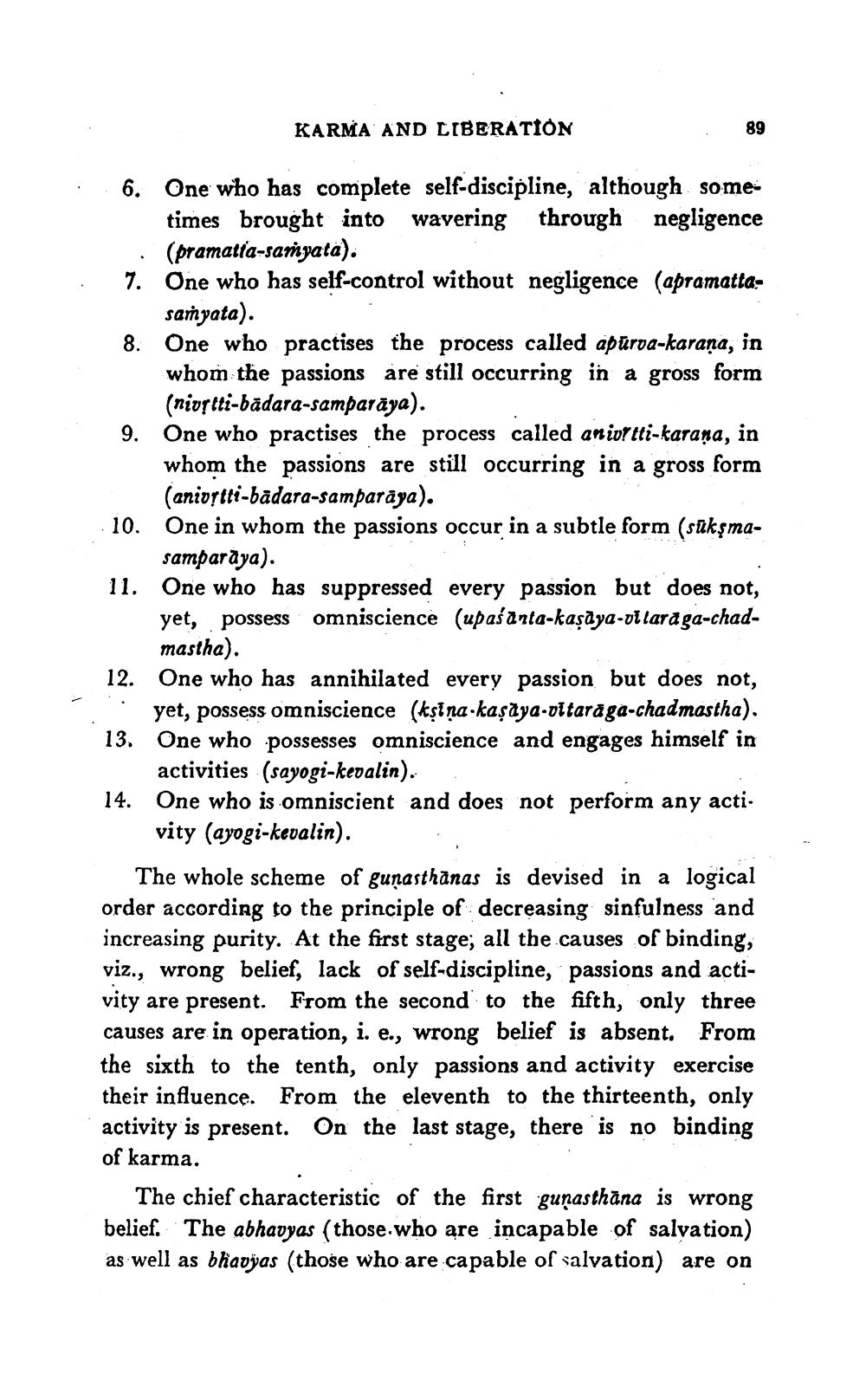________________
KARMA AND LIBERATION
.
89
6. One who has complete self-discipline, although some
times brought into wavering through negligence
(pramatia-samyata). 7. One who has self-control without negligence (apramatta
samyata). 8. One who practises the process called apūrva-karaṇa, in
whom the passions are still occurring in a gross form
(nivrtti-badara-samparāya). 9. One who practises the process called anivrtti-karana, in
whom the passions are still occurring in a gross form
(aniortti-badara-samparāya). .10. One in whom the passions occur in a subtle form (sükşma
samparāya). 11. One who has suppressed every passion but does not,
yet, possess omniscience (upaśānta-kaṣāya-ollaraga-chad
mastha). 12. One who has annihilated every passion but does not,
yet, possess omniscience (kşiņa-kaṣāya-vitarăga-chadmastha). 13. One who possesses omniscience and engages himself in
activities (sayogi-kedalin). 14. One who is omniscient and does not perform any acti.
vity (ayogi-kevalin).
The whole scheme of gunasthanas is devised in a logical order according to the principle of decreasing sinfulness and increasing purity. At the first stage; all the causes of binding, viz., wrong belief, lack of self-discipline, passions and activity are present. From the second to the fifth, only three causes are in operation, i. e., wrong belief is absent. From the sixth to the tenth, only passions and activity exercise their influence. From the eleventh to the thirteenth, only activity is present. On the last stage, there is no binding of karma.
The chief characteristic of the first gunasthāna is wrong belief. The abhavyas (those who are incapable of salvation) as well as bhadjas (those who are capable of salvation) are on




